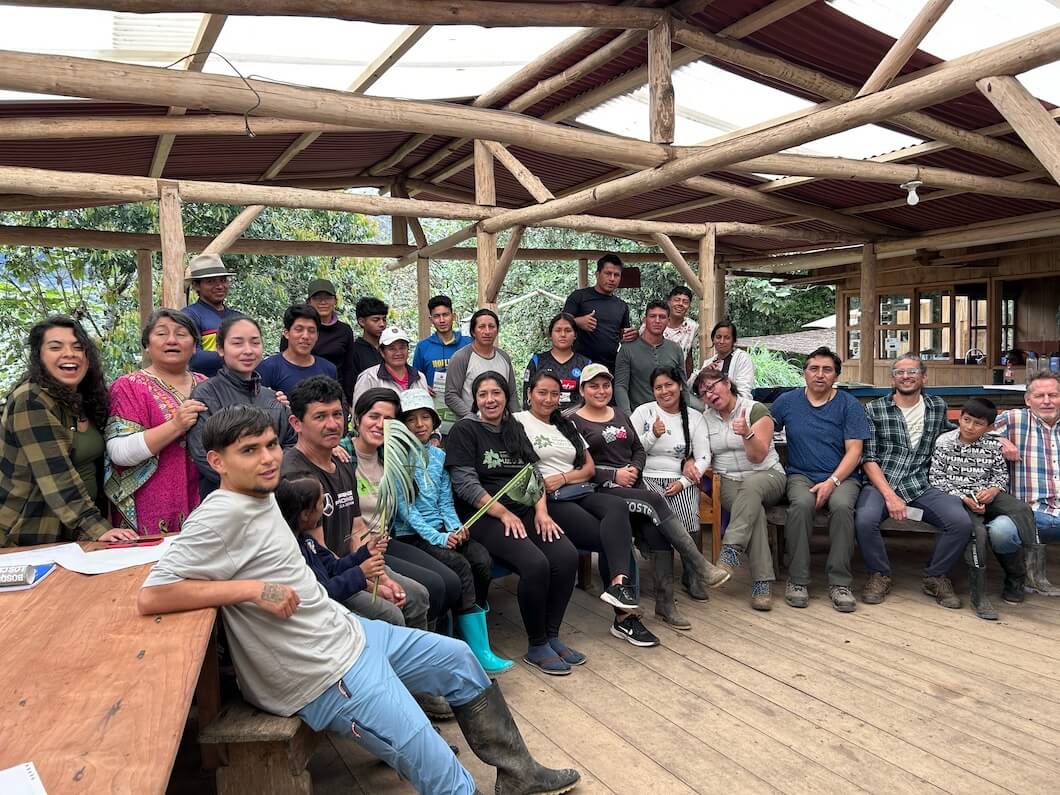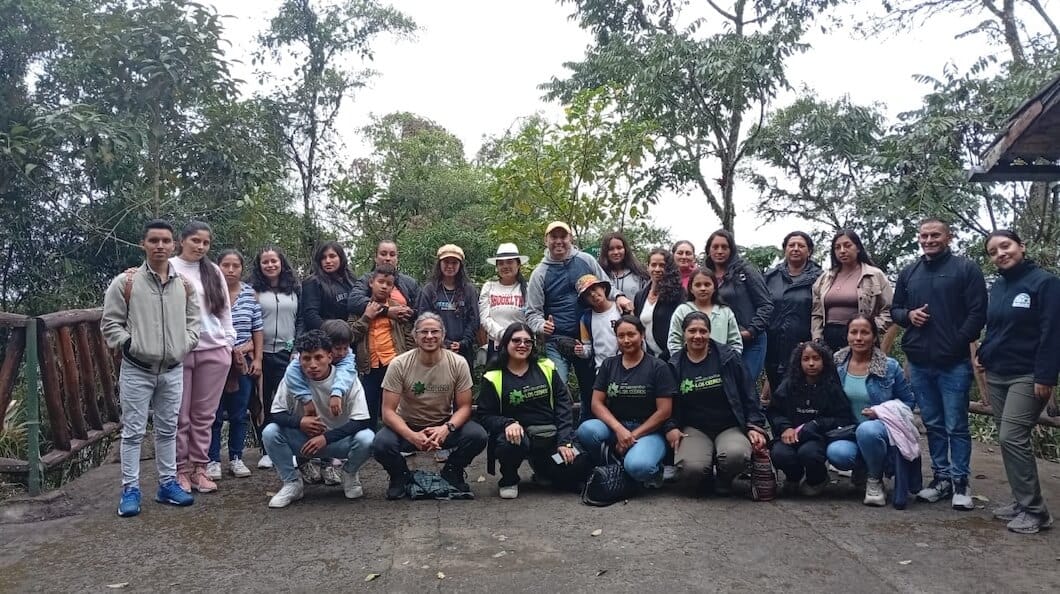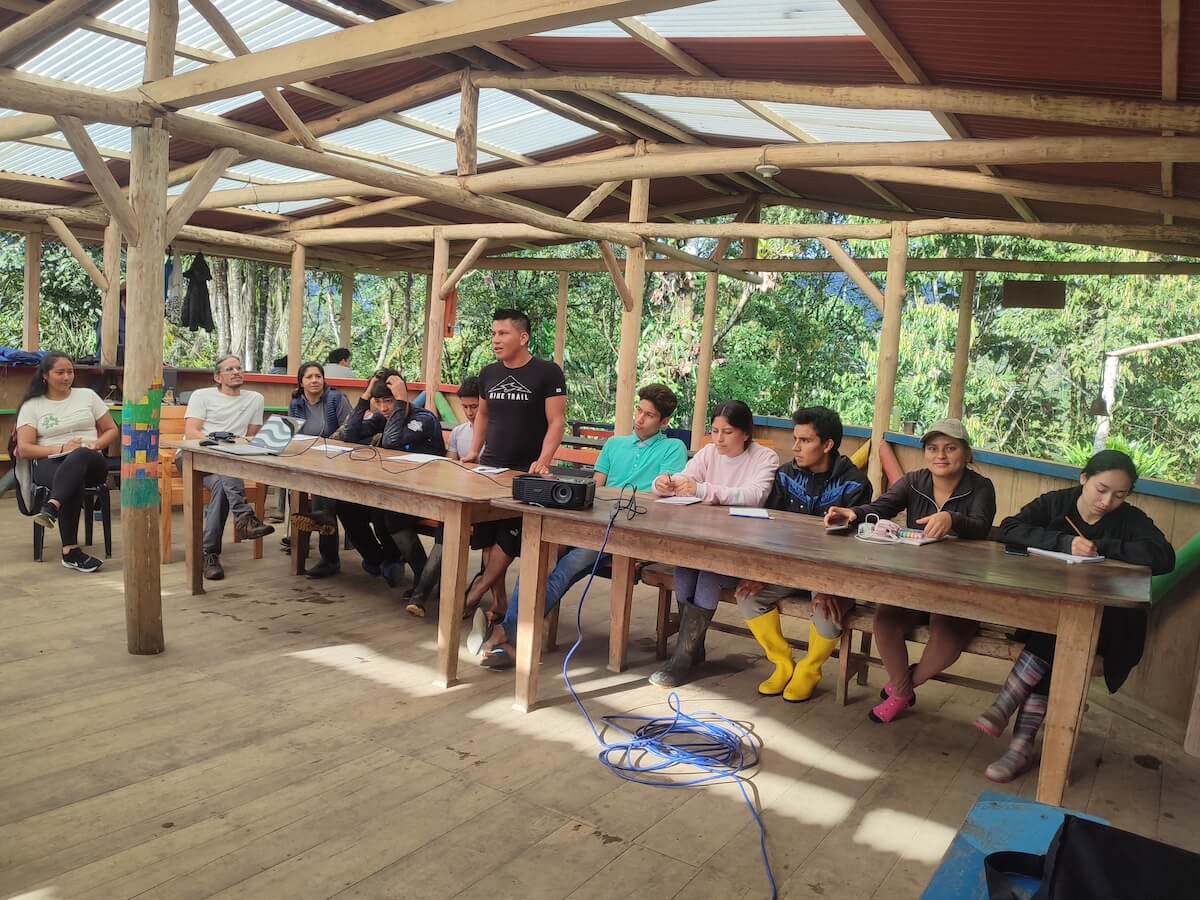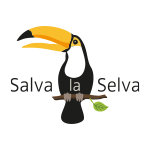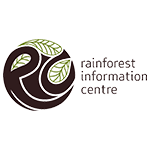by Monserratte Vásquez
Share
During the months of September and January 2024, a group of around 15 community members from the Los Manduriacos Valley were trained in the evaluation of the ecological quality of rivers, as part of the topics addressed in the ranger training course.


In this course, we had the important collaboration of the PhD in Ecology Blanca Ríos, professor at the University of the Americas (UDLA) and member of the BIOMAS research group, and the PhD in Biology Silvana Gallegos, both with extensive experience in biomonitoring of rivers and the development of conservation strategies.
Throughout this time, the course participants have monitored some rivers that originate in the Los Cedros Protective Forest and its area of influence, evaluating their physical, chemical and ecological characteristics, as well as the application of the protocol for Andean rivers through the use of aquatic macroinvertebrates as bioindicators.

The 3 rivers that originate from the Los Cedros Protective Forest, such as the Verde, Los Cedros and Manduriaco Chico, which feed the micro-basins of the Magdalena, La Plata and Manduriaco Grande, are one of its greatest riches, as they provide vital liquid to 9 communities in the area. area of influence. Unfortunately, there are several anthropogenic pressures that threaten their quality and balance and this is precisely where the importance of monitoring rivers lies in order to guarantee ecological balance and the right of communities to access quality water.

The training of rangers in charge of the Los Cedros Scientific Station is part of the commitment that we maintain with the communities of the Los Cedros Protective Forest area with the objective of promoting citizen science and contributing to community management for the management and conservation of the B.P. Los Cedros as established in its 2022-2026 Management Plan.
Related post
Within the framework of the Project “Preparing Civil Society for the Co-Management and conservation of the Los Cedros Protected Forest – KBA ECU 14” financed by the Critical Ecosystem Partnership Fund (CEPF), we held the introductory workshop on the Birds of the BPLC (KBA ECU14) and of Ecuador in March as part of the forest […]
Twenty community members from the Valle de Los Manduriacos, who are training to be forest rangers, participated in the territory and participatory mapping workshop held in March. The workshop consisted of two phases: the first focused on political mapping, led by José Cueva, a member of the CIPBAT team, and the second on social mapping […]
Representatives from the Los Cedros Forest communities visited Yunguilla to learn about sustainable development, organization, and collective hope. Author Jose Cueva
In February, the second phase of the Community Forest Ranger Training Program began, with 10 young adults from last year’s program joined by 10 new young adults from the communities surrounding the Los Cedros Protected Forest, including Brillasol, Magdalena Alto, Chontal, Magdalena Bajo, Pueblo Unido, Paraíso, Río Verde, Villaflora, and Cielo Verde. Each council received […]

